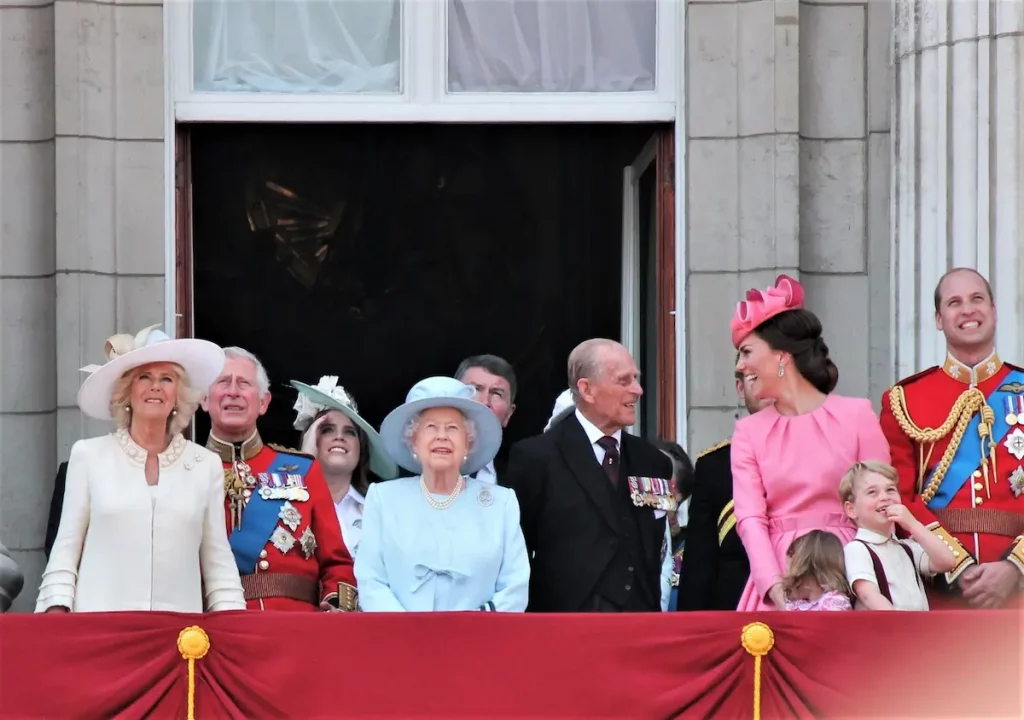The British Royal Family has a long history of marrying third, second, and even first cousins. Although the British Royal family’s interbreeding was not as severe as that of other European royal families, it still had negative consequences. However, the modern British Royal Family no longer marries relatives.
You have likely heard talk that the Royal Family is inbred. But are they really? Does this statement hold any truth, or is it merely a myth? Read on as we explore whether or not the Royal family is inbred.
The history of the Royal Family is a long and complex one. Read on to learn more about inter-marriage of the Royal Family and who was the last Royal Family member to marry a relative.

Related Reading: What Are Some Common Examples of Family Tendency?
Is The Royal Family Inbred?
Like most people, you’ve probably heard that the British Royal Family is inbred. However, if you look at the Royal Family, they seem perfectly normal and don’t seem to have any family traits that would suggest that they are inbred. So, is the Royal Family really inbred? Or is it just a myth, possibly used to harm the Royal Family’s reputation?
Let’s begin by reviewing the Royal Family’s history. Historically, the Royal Family was known for its intermarriage and inbreeding practices. In addition, the Royal Family had a common practice of marrying into other European dynasties as a means of political alliance.
Factors such as how much territory the other controlled and how stable the region was would be important in royal intermarriage. Even though inter-dynastic marriage sounds excellent for the gene pool, these individuals were often related, further narrowing the gene pool.
Within the British Royal Family, intermarriage was common among third cousins; however, first cousin intermarriage was also often seen. This was not always the case, though. Before the year 1540, the practice of marrying first cousins was banned in England. However, King Henry VIII amended this doctrine in 1540, allowing first cousins to marry legally.
In modern times, incestuous relationships are taboo – and rightly so! These relationships can often result in the offspring inheriting detrimental recessive genes, developing rare disorders, birth deformities, and cognitive problems. One of the most famous deformities resulting from inbreeding is the Habsburg Jaw.
The Habsburg Jaw is a protruding jaw deformity seen in many generations of the Habsburg family – a particular European royal family. This jaw deformity would protrude so far forward that the teeth would not align, causing a severe underbite.
Eventually, the Hamburg family’s dangerous practice of inbreeding led to their downfall as they could no longer physically reproduce, resulting in the extinction of their royal family line.
The British Royal family also has its own example of the inheritance of recessive genes through generations. Queen Victoria, born in 1819, married Prince Albert, also born in 1819.
You might be surprised to learn that these two individuals were actually first cousins. Queen Victoria and Prince Albert went on to have nine children throughout their marriage. Unfortunately, Queen Victoria was a carrier of the hemophilia gene, which she then passed down to most of her children.
The gene can lead to hemophilia, which results in excessive bleeding because normal blood clots cannot form. In addition, intermarriage continued with Queen Victoria’s children, resulting in many royal families across Europe inheriting the disease.
Sadly, a few of Queen Victoria’s lineage ultimately died from this disease, including one of her children and five of her grandchildren. Although the royal family has a long history of intermarriage, thankfully, there is no inbreeding in the modern era.
When Did Royal Inbreeding Stop?
If you are familiar with the Royal Family, you might have noticed that some Royal Family members have married outside of British nobility. The practice of marrying outsiders was not common in the history of the British Royal family line, but it has its advantages in preventing inbreeding.
So, who was the last British Royal to marry a relative? Believe it or not, Queen Elizabeth II and Prince Philip were the last to carry on this practice. As a point of clarification, Queen Elizabeth II and Prince Philip were third cousins. This means they share the same set of great-great-grandparents, making them both descendants of Queen Victoria.
Third cousins have an average of 0.78% shared DNA, which is vastly different from the 12.5% shared DNA of a first cousin or 3.13% shared DNA of a second cousin. Marriages between third cousins are technically not considered incest, and are usually not illegal, but are still socially unacceptable in some parts of the world.
Thus, a marriage of third cousins is not prohibited by law in many places, whereas the marriage of first cousins is. Third cousins are in the weird in-between category where they are not considered immediate relatives, but are not regarded as distant relatives either.
Interestingly, studies have shown that third cousin marriages have optimal reproduction rates. This could be since third cousins are genetically far enough apart that they won’t pass down detrimental recessive genes while genetically close enough together that their genes will not be incompatible.
Here is a fun fact: All ten of Europe’s currently reigning hereditary monarchs since 1939 descend from a common ancestor because of the intermarriage of dynastic lines. The common ancestor is the Prince of Orange, John William Friso.
Other Famous Inbred Royals
King George III, who is also known as ‘The Mad King’, was believed to be a product of inbreeding. In addition, it’s believed that King George III suffered from porphyria, which causes bouts of ‘madness’ and blue urine.
This disease results from the inheritance of two recessive genes and can be seen in inbred individuals. King George III was the reigning monarch of England when they lost control over the American colonies. As such, he is widely known as the King who lost America – in addition to his madness.
However, his ‘madness’ has been under debate recently. Some people speculate that his madness was not due to porphyria but, in fact, bipolar disorder (a form of mental illness).
Some people state that inbreeding may also have contributed to King George’s bipolar disorder; however, the disorder is not often related to inbreeding.
Also, some people state that King George the III’s blue pee could have resulted from the medicine he was taking. King George III was taking a medication that contained gentian. Gentian is a blue plant that is used as a mild tonic, which can turn urine blue.
Does Inbreeding Affect Royal Ruling?
Interestingly, a study conducted on 331 European monarchs between 990 and 1800 found that those who were the most inbred were worse rulers than individuals with genetically diverse gene pools.
Maybe this “finding” is not so surprising at all, as inbred individuals often had cognitive and physical difficulties. So, it is no surprise that the more inbred the ruler was, the less capable of ruling a country they were.
This resulted in countries often being far worse off in terms of poverty, hunger, overall satisfaction, and decline in agriculture and strength of the army. Considering this study, it is quite possible that inbreeding could have affected how well the Royal Family ruled or retained their power.
For instance, some may attribute the loss of the American colonies as a direct result of King George’s ‘madness,’ which many speculate is a result of inbreeding. However, it is worth noting that the British Royal Family was not as inbred as some other Royal families in Europe.
Related Reading: What Are Some Common Examples of Family Obligations?
Conclusion
There is a long history of inbreeding and intermarriage within the British Royal Family. Although many of the Royal Family members do not show physical deformities, harmful genetic abnormalities have passed down from generation to generation – the most notably hemophilia from Queen Victoria.
Thankfully, the practice of marrying relatives has died out, and as of right now, British Royals are even seen marrying individuals who are not part of British nobility at all. Fortunately, it is unlikely that this practice will ever come back, and thank goodness for that.

